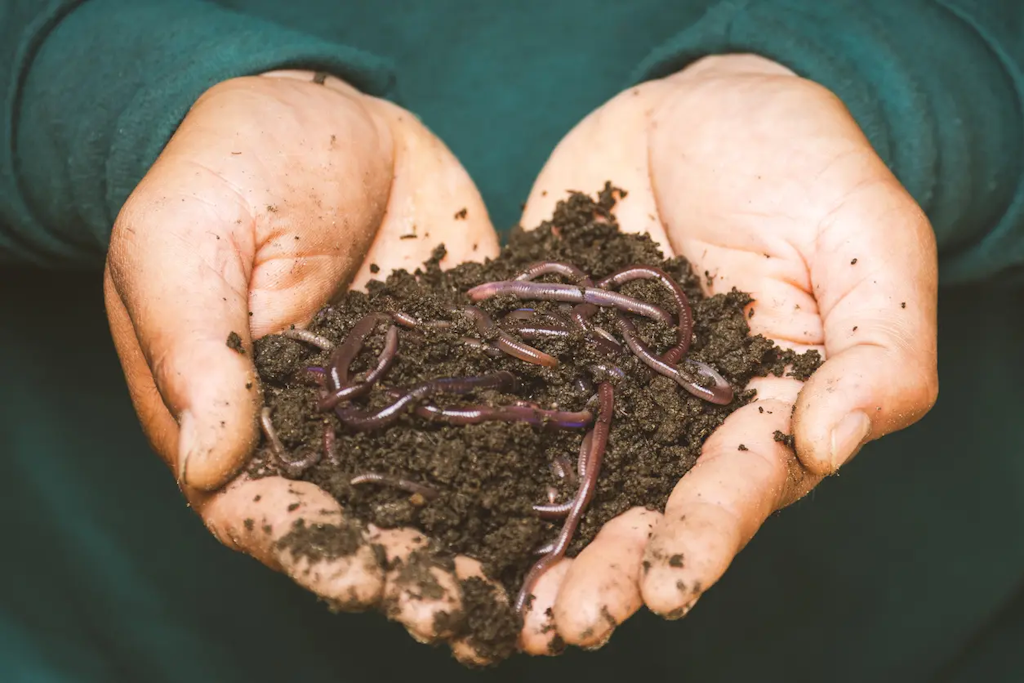Regenerating the Soil with Worms: A Natural Approach to Farming

In the paddocks of northwest Victoria, a quiet revolution is happening underground. What seems like ordinary dirt mounds is actually home to an astonishing amount of biological activity—led by millions of worms. These worms are producing castings, better known as worm poo, which are transforming the soil and revitalizing the crops.
Key Points:
- Worm castings (worm poo) are full of beneficial microbes.
- Millions of bacteria in worm castings promote soil and plant health.
- The more worms are fed, the more castings they produce.
- Worms can double their population every 30 to 60 days under ideal conditions.
- Worm juice, made from worm castings, helps crops grow larger, sweeter, and more resilient.
The Power of Worm Castings
Worm castings are a nutrient-dense form of fertilizer, but their real magic lies in the microbes they contain. As worm farmer Russell Calder explains, “The micro-organisms that are contained in their poo are very beneficial to soils and plants and they stimulate root growth.” These beneficial bacteria help restore the biology that years of chemical farming have depleted.
In permaculture, we recognize that healthy soil is the foundation for healthy plants. Worm castings not only provide nutrients but also improve the structure of the soil, making it more capable of holding moisture and resisting heat. This approach aligns with the principles of permaculture, which emphasize working with natural systems instead of relying on synthetic chemicals.
Worm Farming on the Rise
The demand for worm castings and worm juice is growing rapidly. Local farmers are lining up to get their hands on these natural fertilizers, with some requesting “semi loads” of the liquid worm juice to fertilize their crops. Calder has expanded his worm beds by 150 percent to keep up with the growing demand.
“All the worms do is basically eat and poo,” Calder says, but there’s more to the story. Worms are prolific breeders, capable of doubling their population in just 30 to 60 days under the right conditions. This fast breeding rate makes worms a sustainable and scalable solution for soil regeneration.
Real Results from Local Farmers
Farmers in the area are already seeing the benefits of using worm juice. Rick Mancinelli, an organic stone fruit grower in Wood Wood, has noticed significant improvements in his crops since switching to worm-based fertilizers. “It definitely made a big difference for my fruit,” he says. “It made it a lot sweeter and a little bit bigger, so I was pretty happy with the season all around.”
Mancinelli also notes that the worm juice helps his soil retain moisture for longer periods, making his crops more heat-tolerant. For farmers in hot climates, this added resilience can make a crucial difference during difficult growing seasons.
Andrew Rix, an organic almond producer, has also turned to worm juice to improve his orchards. He emphasizes that organic farming is about building up the microbes in the soil, which can help plants naturally resist diseases. “There’s a school of thought that if you have good microbes on the foliage as well, it helps resist attack from pathogens and fungal disease,” Rix explains. His orchards have remained disease-free since making the switch.
A Permaculture Success Story
Russell Calder’s journey into worm farming was not just about boosting crop yields—it was also a response to his own health. After falling ill from chemical exposure on traditional farms, he swore off synthetic fertilizers and pesticides. “Twenty years ago I got very ill, and I, in part, blame that on chemical exposure,” Calder shares. Since then, he’s dedicated his farm to natural, chemical-free practices.
His experience highlights the connection between personal health, soil health, and environmental sustainability. Permaculture teaches us to care for the earth, care for people, and share the surplus. Calder’s worm farm is a beautiful example of this philosophy in action, showing that when we work with nature, we all thrive.
Nature’s Helpers
Worms aren’t the only creatures benefiting from Calder’s farm. His land has become a sanctuary for local wildlife, including a family of kookaburras, magpies, and mudlarks. “They don’t make any dent on the numbers, that’s for sure,” Calder jokes, but their presence is another sign that his farm is part of a healthy, thriving ecosystem.
Moving Away from Chemicals
For many farmers, the hardest part of transitioning to organic farming is giving up their reliance on pesticides and fungicides. As Rix notes, it can be difficult to abandon chemical sprays, but the results are worth it. “For me, I think the theory held. So far, the foliage is looking pretty disease-free,” he says.
In permaculture, the goal is to build resilience naturally—by strengthening the soil, encouraging biodiversity, and letting nature take its course. Calder’s worm farm is proof that this approach works. By focusing on building up the soil’s natural biology, rather than trying to control it with chemicals, we can create more sustainable, healthier farms.
Conclusion
The lesson is clear: we don’t need to fight against nature to grow abundant, healthy food. By embracing natural processes—like the incredible work done by worms—we can heal our soils, support biodiversity, and grow food that’s better for both people and the planet. Permaculture teaches us to respect the rhythms of nature, and Calder’s worm farm is a shining example of what’s possible when we do.
